
Studio Story
What happens in an artist’s studio?
There are many prevailing myths in our culture about what an art studio is and what actually goes on inside one. We can probably conjure images of light pouring in from old glass windows onto a wooden easel, or cramped loft space in New York with a dirty floor and no heat. As for the artists who go to these spaces, what are they actually doing in there? Do they fling paint around with a cigarette hanging from a corner of their mouth? Do they stare blankly at an empty wall until inspiration, like a bolt of lightning, strikes? Do they face down their demons and negative self-talk to rise triumphantly at the end of the day or week or year with something that no one really understands?
While these types of artists and studios have existed, more often than not an art studio is a small corner of someone’s living room or a space at the end of a kitchen table. Maybe the artist has several part-time jobs, maybe they are a parent or a caregiver. If they are lucky, maybe they have a few hours a week to stare at a piece of blank paper and give form to their vision.
In art school, I did glean small clues (but not many!) from various professors about how to actually be a visual artist—because, like many people who start down that path, I didn’t really know. The advice went something like this: get a studio space, put up a few postcards that inspire you, go there as much as you can, and do your work, even if you just stare at the wall some days.
There was no mention of how to afford a studio space, where to live (it was assumed you would live in New York City), how to meet other artists, how to stay inspired and committed to your work, or how to balance your studio time with your family, friends, pets, and physical/mental health.
Images: Joyce Pensato in her studio (photo by Marco Anelli)
Vija Celmins in her studio 1966 (photo by Tony Berlant)
My art school studio 1999
My daughter working in the studio 2013
Portland, Oregon
After graduating from art school, I returned to Portland in the fall of 1999. I found a job as a teaching assistant in an after-school art program run by two local artists. I found a small studio space for $125/month. I put up inspirational pictures, I laid out my paints. I went there as often as I could. It was a bit lonely, but it was a place where I could go and slowly start bringing my ideas and feelings into visual clarity. I went to graduate school at PSU in 2002—that was the last year that they provided large, light-filled studios.
Since receiving my MFA in 2004, I have had several different studios in old, affordable buildings. I began offering private classes in these spaces. I liked having my materials all around me and often allowed students to try them out before having to buy things on their own. When they came to class, they could see what I was doing, see the messes I had made, and see my triumphs and failures. The mystery of “what happens in an artist’s studio” was at least partly revealed, and became normalized for them and less vulnerable for me.
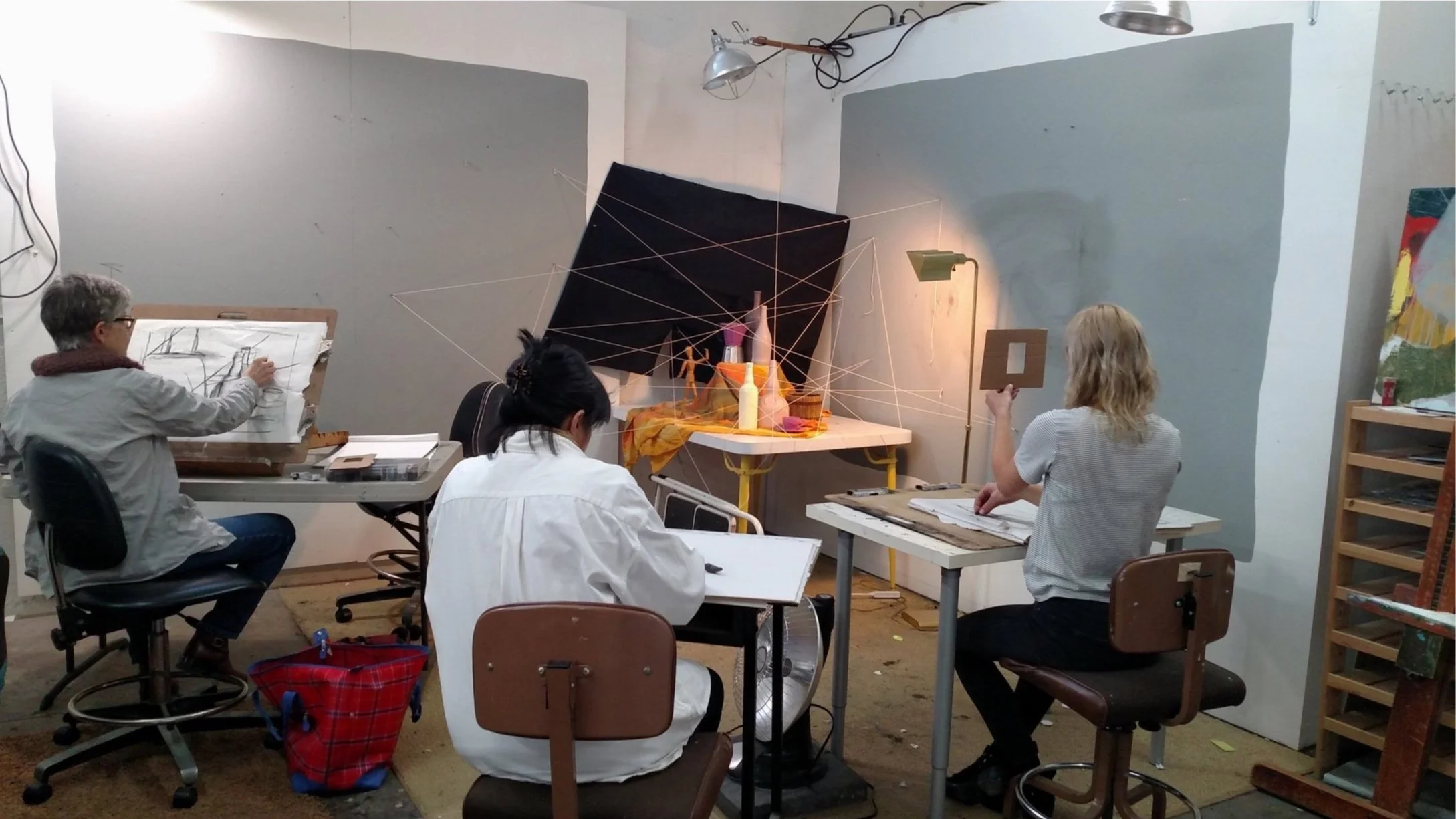
Portland has the 4th highest concentration of artists in the nation (after New York, Los Angeles, and San Francisco).
— From “Seeing Visual Artists: A Portland Pandemic Report” by Bean Gilsdorf
I am one of many artists who have enjoyed working and living in this city, and though balancing my studio practice with other life events (becoming a mother in 2012) has been hard at times, I have always felt that my studio was a sacred and essential part of my identity. When the old building that I was in became slated for re-development, I knew affordable studio space was going to be difficult, if not impossible to find.
(Image: teaching experimental drawing in my old studio)
“Portland, Oregon, has unequivocally—and very successfully—branded itself as a city where the arts thrive. For more than two decades, the city has enjoyed a reputation as a creative hub with an “arty,” “eccentric,” and “unconventional” population whose imaginative output attracts out-of-towners and local patrons alike”
—from “Seeing Visual Artists: A Portland Pandemic Report” by Bean Gilsdorf
Paisley Studios
From being a student of art, an assistant teacher, running my own classes, and gleaning knowledge from the writings of other artists/teachers, I have distilled my philosophy on art education into 8 guiding principles. These principles form the backbone of all the classes that I teach in the studio. Through working with The Feminist Business School, I clarified how grounding my studio practice is for me, and how I could extend that support to other womxn artists in a city that has changed so drastically and whose artists were on shaky ground even before the pandemic.
I conceived the studio membership program from the notion that offering “grounding support” to artists means providing infrastructure, instruction, material knowledge, permission to experiment, enthusiasm, encouragement, confidence, community, and affordable workspace. While I cannot provide these things on a city-wide scale, I can work through my business, to support my own creative health as well as that of other artists.
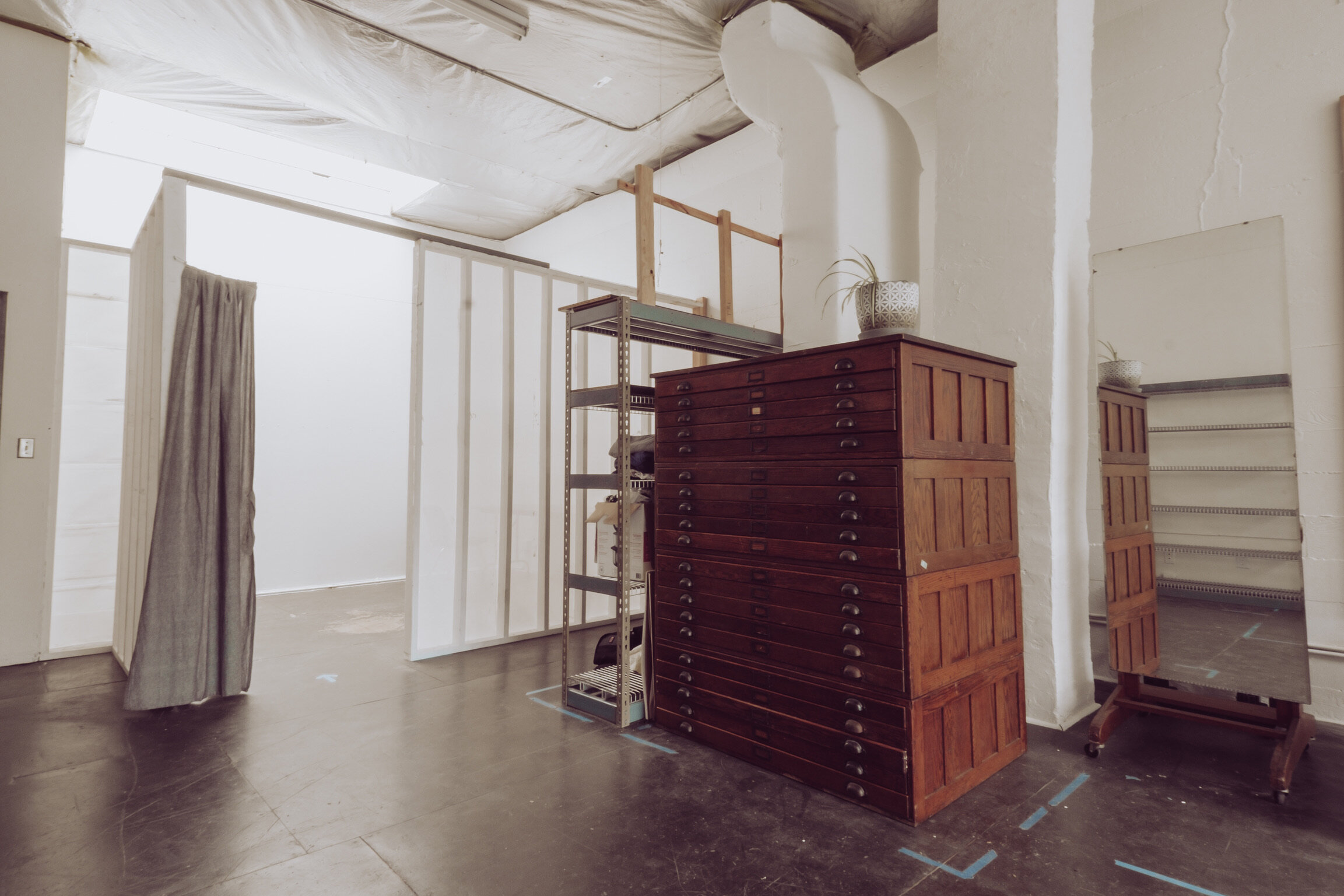
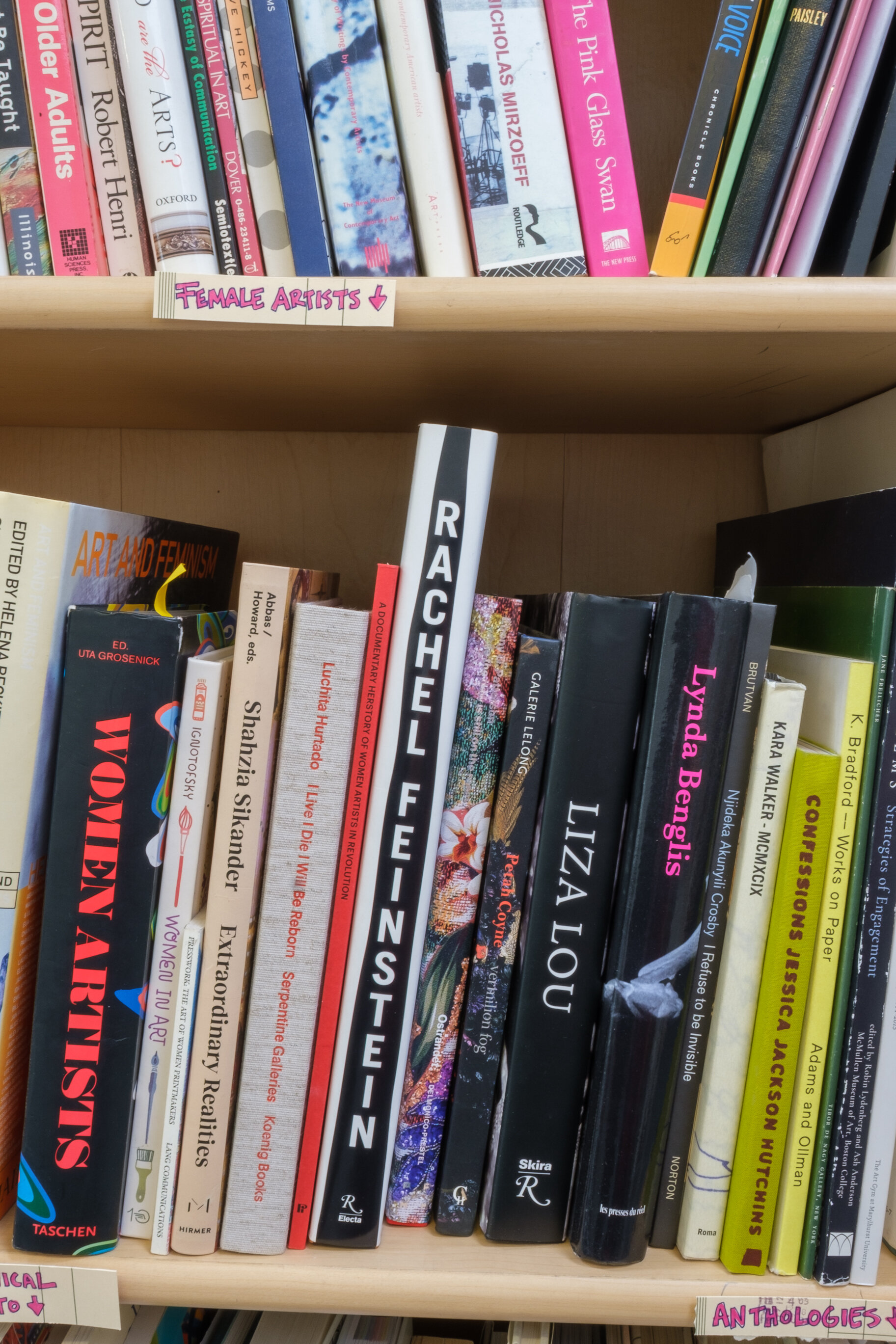
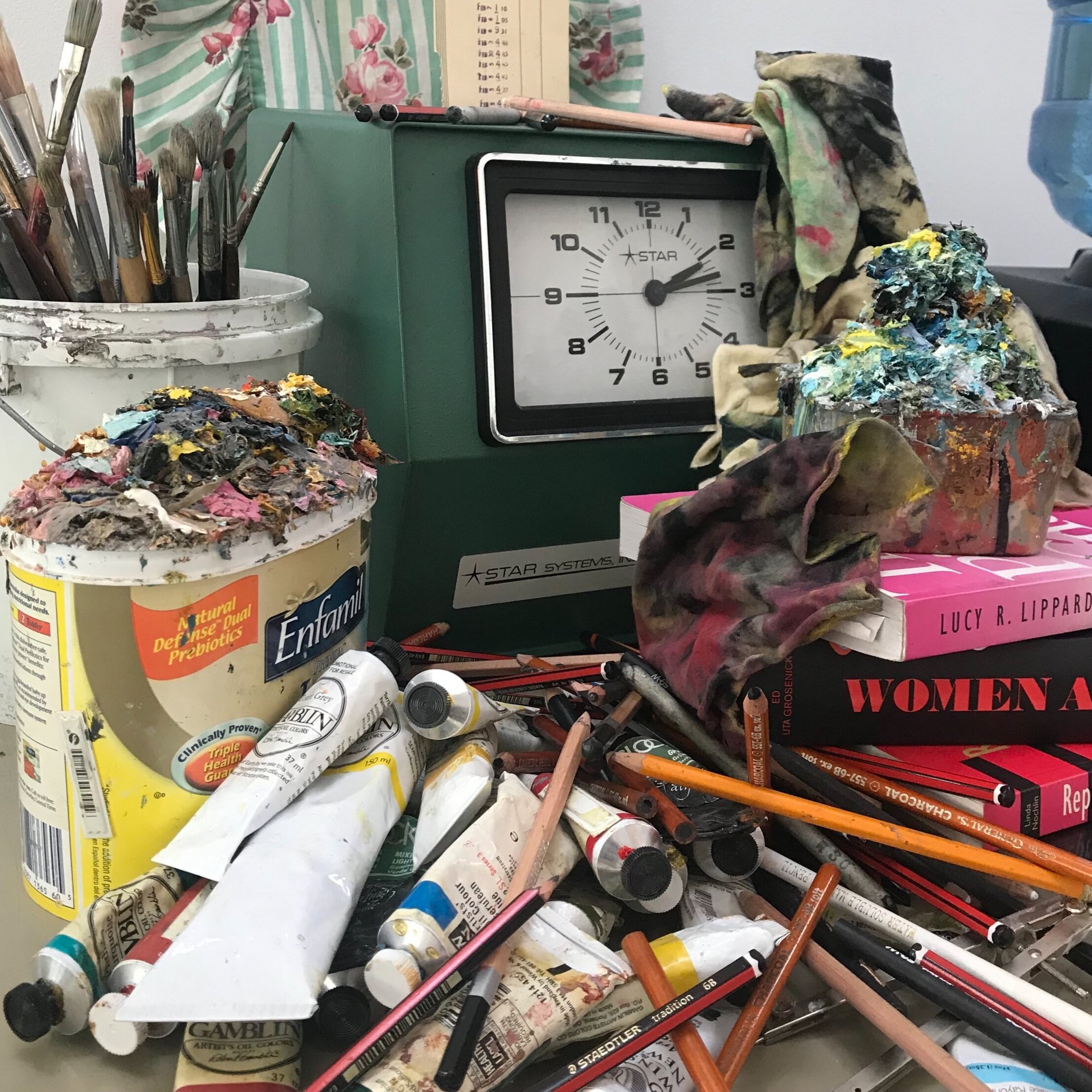

After a long search, I was grateful to find a home for the studio in the early spring of 2019 at the current location in NE Portland. Since beginning the membership program in the summer of 2019, the studio has provided creative sanctuary to over 45 artists. At the height of the pandemic in 2020, we received a small grant from the PDX Area Artist Emergency Relief fund, which was passed on directly to member artists. We were able to keep Covid protocols in place and slowly begin classes again. In 2021, we took a big leap and expanded to the space next door and built a beautiful and spacious classroom. We began a partnership with VibePDX, a local arts non-profit, to host kids’ classes and workshops in the new space. In November of 2021, we also hosted our first Artist/Mother gathering to begin forming connections between working artists who are balancing their creative practice while caring for other humans. From 2022-2023, the studio had a partnership with WildCraft Studio School, and was proud to help support their mission to offer high-quality, hyper-local learning experiences rooted in craft traditions and fine art. We are excited to continue supporting artists and looking for ways to serve our members and students in 2024! Please consider subscribing to our monthly newsletter to hear more about current happenings.
“To produce their artwork, 92 percent of visual artists in Portland require studio space, yet a 2020 study from the DeVos Institute of Arts Management warns that “access to space for creation and presentation is limited and shrinking” in the metro area.”
— From “Seeing Visual Artists: A Portland Pandemic Report” by Bean Gilsdorf
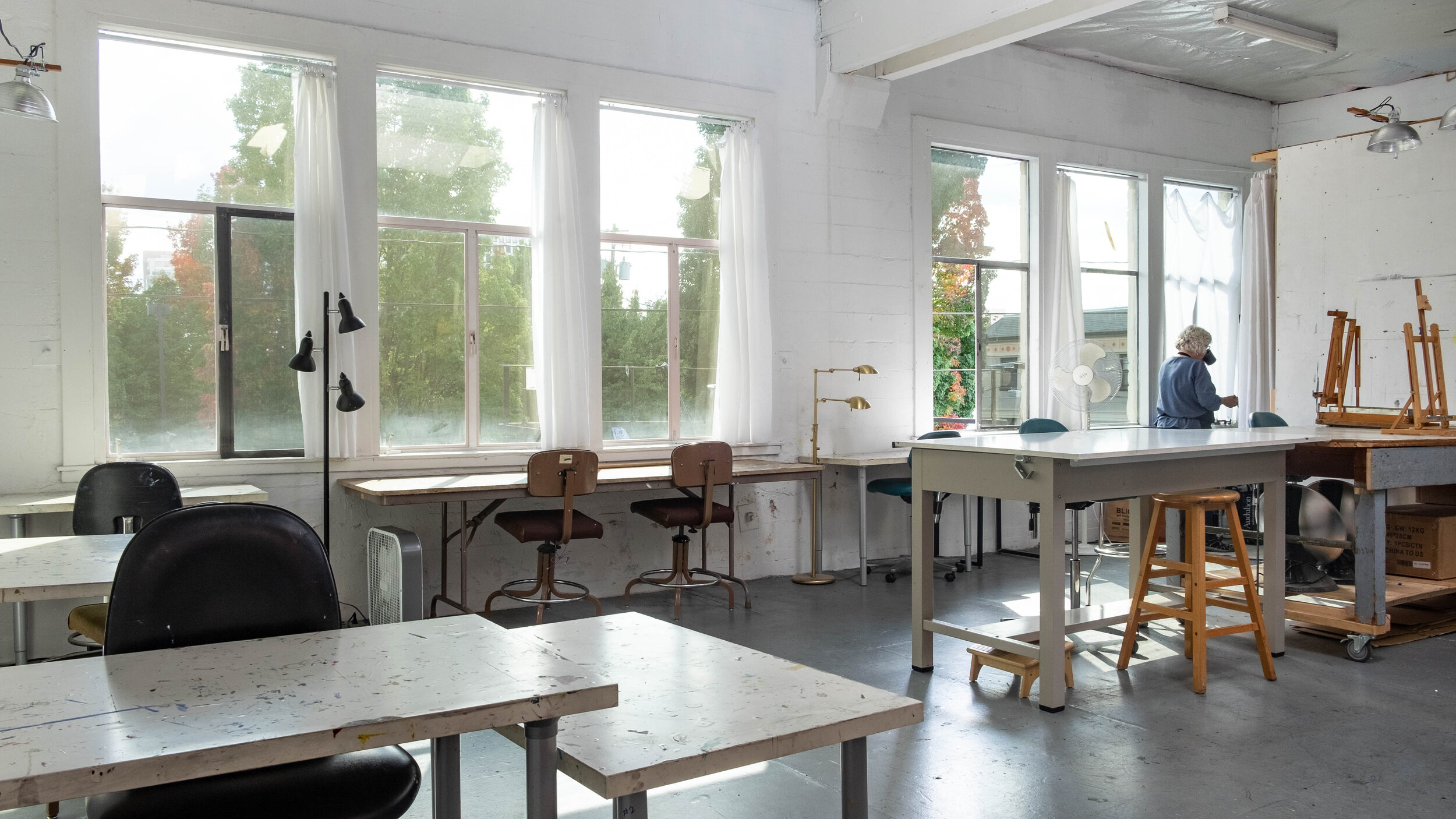
Why Womxn Artists?
The decision to make the studio a sanctuary for womxn artists (both cis, queer, & trans), elevate the work of historical and contemporary women artists in my classes, and structure the business policies within a feminist framework was intentional. Born out of my past experiences with toxic male artists in shared spaces and learning environments, it felt important to create a safe space for our members. The studio instruction provided by myself and other guest teachers is open to all genders.
I adhere to the definition of feminism that the late scholar, bell hooks, articulated as “the movement to end sexism, sexist exploitation, and oppression.” I also recognize that the history of the feminist movement in the US has often centered on whiteness and upheld systems of white supremacy. As a cis-gendered white female, I am reflecting and working on dismantling my own role in upholding these harmful systems and welcome any dialogue from students, members, and fellow artists regarding this work.
Audre Lorde’s essay “Poetry is Not a Luxury” has also had a huge influence on my ideas about the importance of making art. As Lorde defines poetry as “a revelatory distillation of experience,” I believe that visual art making and the commitment artists make to creative self-expression, can also be defined as such. It is through creative practice and when we pay, as Lorde says, “disciplined attention to the true meaning of “it feels right to me” that we can imagine futures and see possibilities for ourselves and our communities that we otherwise could not fathom.
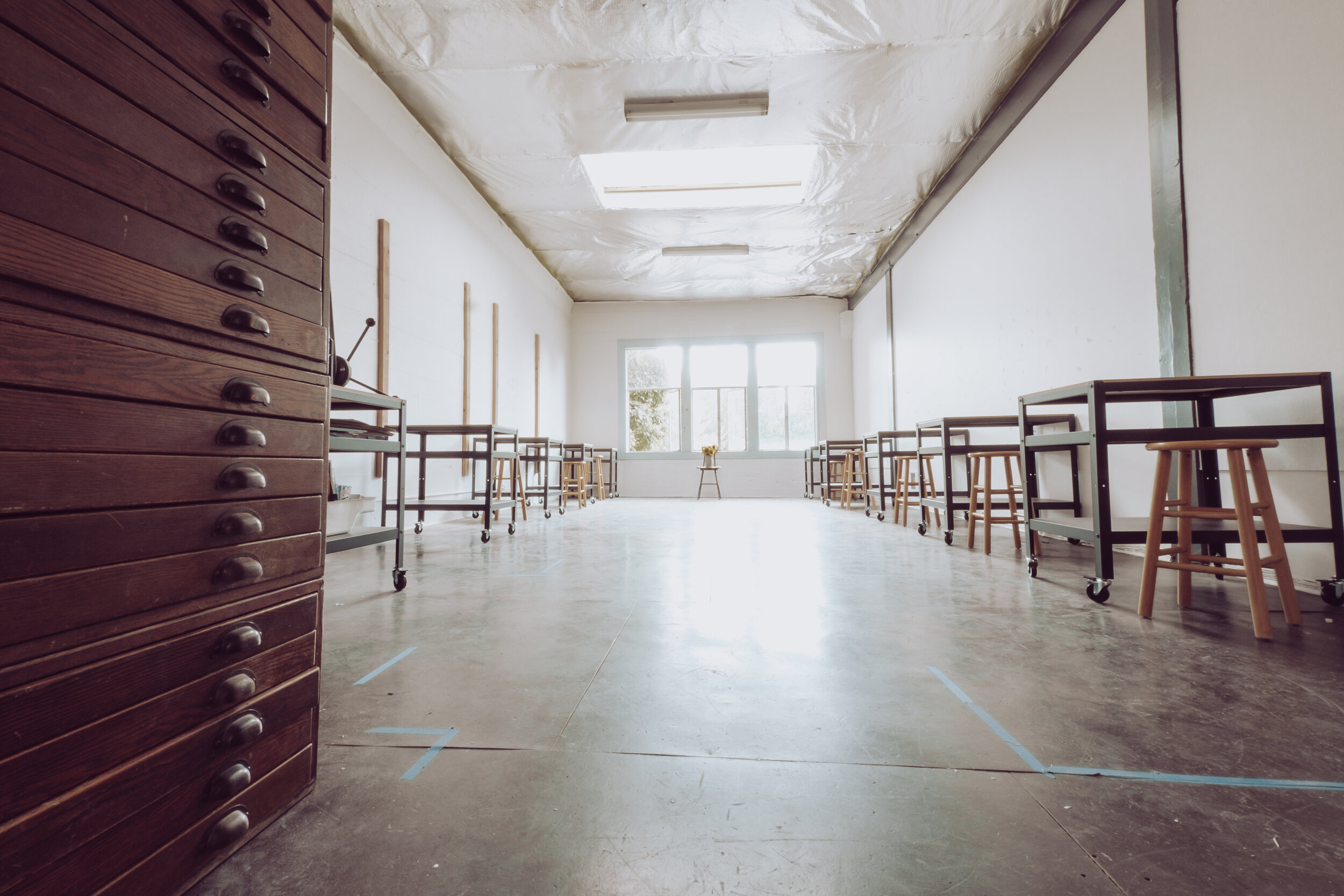
Bonnie Paisley holds a BFA from The Rhode Island School of Design and an MFA from Portland State University. She lives in SE Portland with her partner, 12-year-old daughter, and a large dog. When not working in her studio, teaching, or looking at art, she enjoys visiting family in Colorado and New Mexico, occasionally going up mountains, and gardening. (Photo by rufuspix.com)






